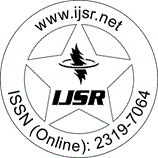Downloads: 6
Bulgaria | Dental Science | Volume 14 Issue 10, October 2025 | Pages: 1215 - 1221
Clinical Integration of Deep Margin Elevation with Adhesive Lithium Disilicate Restorations in Posterior Teeth: A Case Report
Abstract: This article presents a clinical case focused on the adhesive cementation of lithium disilicate press ceramic restorations in distal posterior teeth, emphasizing both the material?s intrinsic properties and its clinical implications. Lithium disilicate offers a unique combination of high flexural strength, controlled translucency, and excellent marginal integrity, making it particularly suitable for esthetically demanding and functionally loaded distal restorations. Prior to tooth preparation, the deep margin elevation (DME) technique was employed to reposition subgingival margins to a more accessible supragingival level. This step provided optimal control of the operative field and served as a biologically sound foundation for a minimally invasive preparation of sound dental tissues, preserving enamel and dentine while facilitating adhesive procedures. The article outlines a step-by-step cementation protocol tailored to the optical behaviour and mechanical resilience of lithium disilicate ceramics. It also discusses the comparative use of different ceramic materials in distal regions, highlighting their indications based on structural and esthetic requirements. The microstructural stability and adhesive compatibility of lithium disilicate contribute to predictable long-term performance. By integrating the advantages of the DME technique with evidence-based adhesive protocols, clinicians can achieve durable, esthetic, and biologically harmonious outcomes in posterior adhesive dentistry.
Keywords: adhesive dentistry, indirect restoration, lithium disilicate, marginal elevation, press ceramic
How to Cite?: Nikolova N., "Clinical Integration of Deep Margin Elevation with Adhesive Lithium Disilicate Restorations in Posterior Teeth: A Case Report", Volume 14 Issue 10, October 2025, International Journal of Science and Research (IJSR), Pages: 1215-1221, https://www.ijsr.net/getabstract.php?paperid=SR251023005055, DOI: https://dx.doi.org/10.21275/SR251023005055
